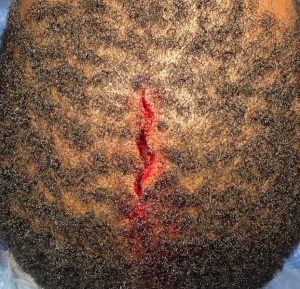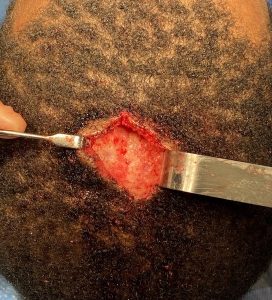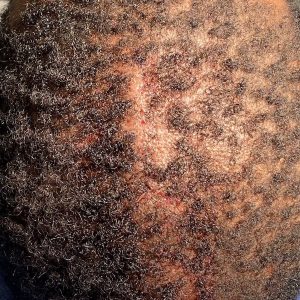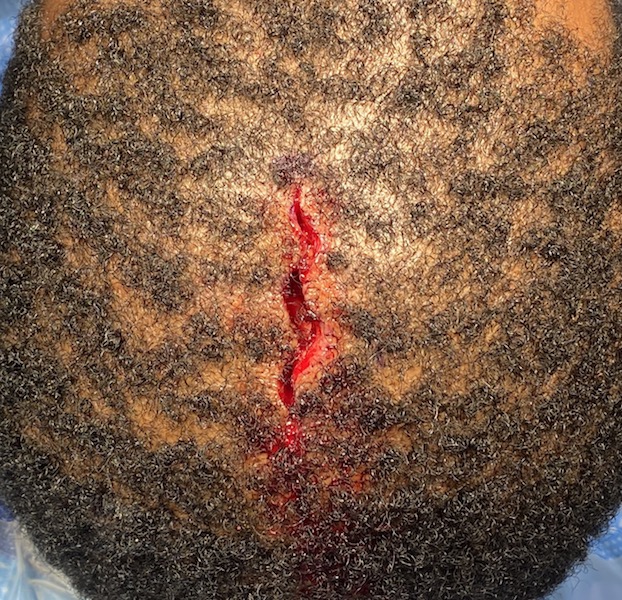The sagittal crest deformity is a common skull reduction surgery. This is an elevated sagittal suture line which appears as a midline crest on top of the head. It may be due to a thickened sagittal suture line, a naturally narrow head shape with parasagittal-temporal deficiency or a combination of both. When it occurs because of a raised sagittal suture line in isolation, there is enough bone thickness to usually make for a satisfactory reduction.
Because many patients with a sagittal crest deformity have a shaved head or closely cropped hair, the size and location of the incision is an important aesthetic consideration. Its placement is also important to ensure that adequate access can be done to do a satisfactory bone reduction.
Typically the incision is a small side to side one placed at the back end of the sagittal crest. This places it near the crown of the skull which is a good place to ‘hide’ it. This incision type and location makes for a tunnel technique when doing the reduction. A long curved retractor is placed to lift the scalp up that allows the handpiece and burr to work underneath it to reduce the bone.



The typical best place to put any incision is where it parallels the relaxed skin tension lines of the involved skin. That is at different locations on the scalp but on the top of the head it would more in a side to side direction. But for a small line of access that will lie directly over a reduced bone area, the sagittal incision heals as well as one that runs perpendicular to it.
Dr. Barry Eppley
Indianapolis, Indiana



